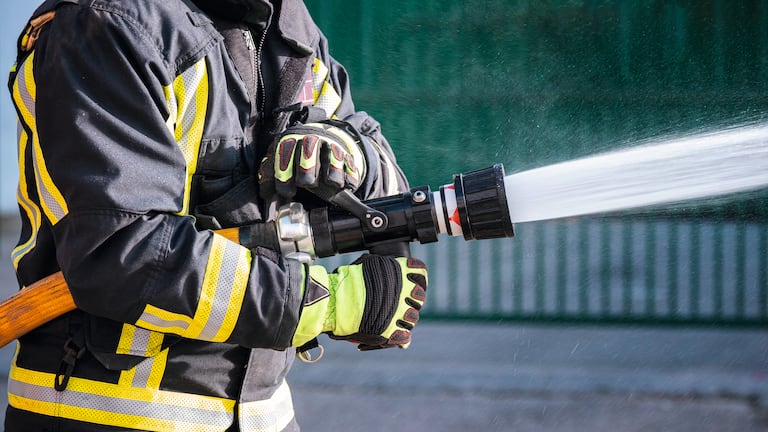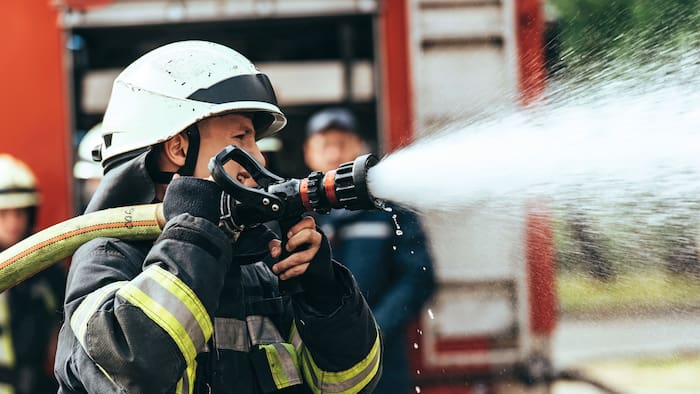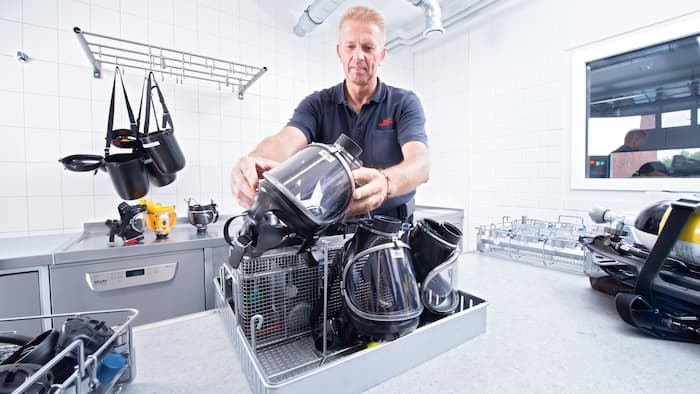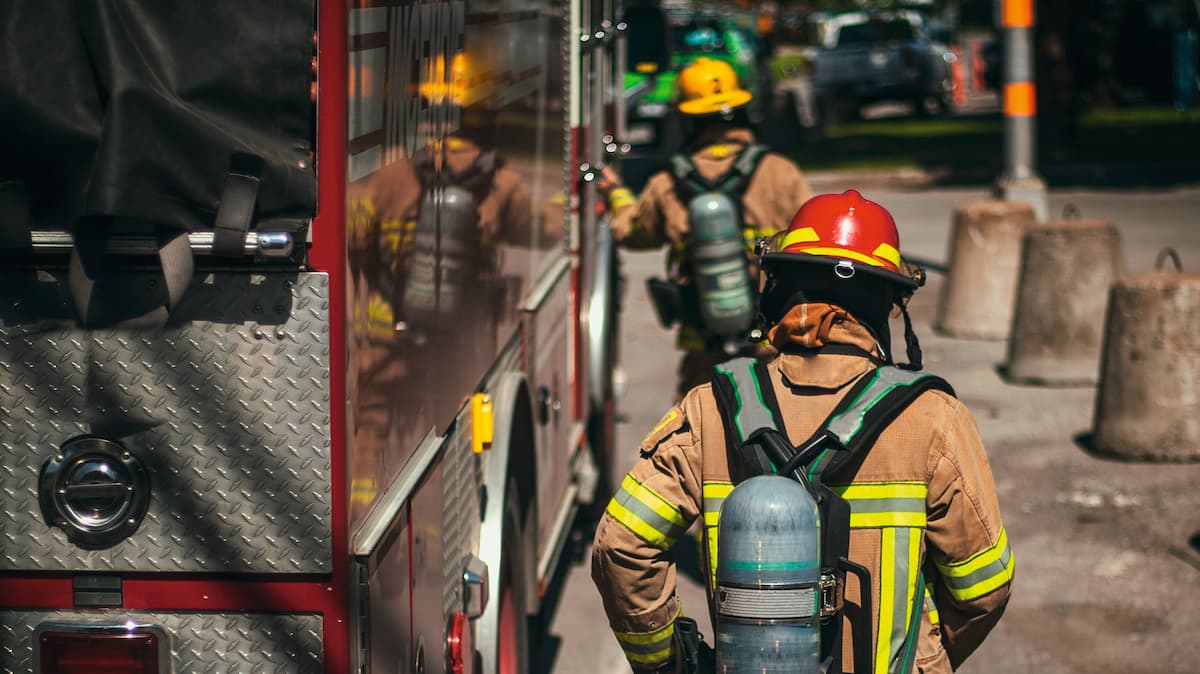
Professional solutions for the safe reprocessing of PPE
PPE - protection and hazard at the same time
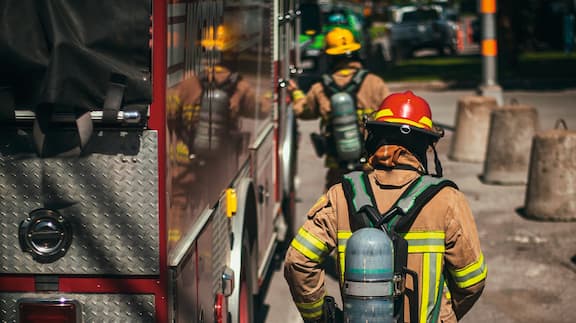
Due to the increased awareness of the issue of cancer caused by fire, operational hygiene is also gaining significance. The concept of operational hygiene is crucial in the reprocessing of PPE. The purpose of personal protective equipment is to protect against operational hazards (e.g. heat, moisture or harmful substances). However, if the PPE is contaminated, it also represents one of the greatest dangers for the emergency services. In the event of a fire, the equipment is often contaminated with carcinogenic smoke and soot. In addition, sweat, saliva, exhalation moisture or skin abrasions come into contact with the PPE. The personal protection of firefighters is a key factor in operations with their high requirements. Safe reprocessing of PPE is therefore of vital importance.
A basic distinction is made between manual and machine cleaning. Machine cleaning can be carried out in a fresh water dishwasher, a washer-disinfector or a washing machine, for example. The PPE manufacturer's care recommendations should always be followed. Depending on the degree of soiling or extent of contamination, it is advisable to use automated reprocessing. In addition to controlled, proven cleaning steps that are individually tailored to the PPE in question, protection against the spread of contamination is the decisive factor in minimising the risk of potentially hazardous smoke. The key here is to strike the right balance of cleaning that is customised to the degree of soiling while at the same time treating the items to be washed with care.
Expert tips for the safe reprocessing of PPE
With 360PRO, Miele Professional offers a system solution for the professional reprocessing of personal protective equipment. These are developed by cross-plant teams of experts who, in addition to product and programme development, also focus intensively on the target group and the materials to be reprocessed, their properties and washing and drying habits. This enables the programmes to be carefully tailored to the requirements of the various materials and deliver reliable results.
In this article, Carsten Haarhaus, application engineer at Miele Professional's Lehrte plant (Germany), shares his knowledge and explains how these challenges can be solved by carrying out extensive washing and drying tests individually for the numerous PPE utensils. Let's take a closer look at some examples.
Protective jackets and trousers, rescue service clothing

Protective suits consist of a diverse mix of materials including Nomex, Kevlar, moisture protection membranes, reflectors, insulation and more. These materials offer protection against heat, flames and mechanical impacts. Due to the very different levels of soiling of the protective suits during use, it is necessary to clean them as required.
To ensure that the surfaces are fully protected again after proofing, we recommend drying the protective suits in a tumble dryer or drying cabinet at temperatures between 55 - 80°C.
Helmets

A firefighter's helmet consists of several components and materials, each of which fulfils specific functions. The time-consuming disassembly and cleaning of the various components after use is a thing of the past with the cleaning programme for helmets, which is available in the dishwasher and washing machine. For cleaning in the washing machine, the entire helmet is placed in a protective bag specially developed by Miele and equipped with innovative padding material and washed intensively but gently. For this process, it is best to use a mild detergent that is gentle on the product and, depending on how soiled it is, add a mild detergent booster. Drying can take place in the ambient air or in a drying cabinet.
Please note: Not all helmets are machine washable; the helmet supplier must issue approval. However, the proportion of machine-washable helmets on the market is increasing.
Chemical protection suits

So-called CSA clothing is made of high-strength plastics such as butyl rubber, Tyvek or chemical-resistant PVC. These often multi-layered, impermeable suits offer maximum protection against chemicals and other hazardous substances.
Cleaning/decontamination in the washing machine consists of cleaning the outside of the closed suit and then disinfecting the outside and inside of the suit with the zip open. The chemical protection suits are dried upside down.
Protective gloves
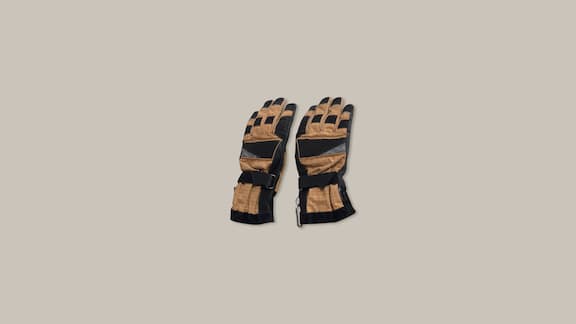
A distinction is made between full-textile, leather and partial leather gloves. Due to the often heavy soiling of the gloves, intensive cleaning is necessary. The cleaning of gloves made of leather or textile material is largely comparable. Leather gloves require the addition of a so-called leather licker products. This additive cares for the leather after washing and maintains its elasticity. In general, tumble dryers should be avoided for drying multi-layered gloves.
Wetsuits

There are numerous, sometimes contradictory care recommendations for the reprocessing of wetsuits and diving suits. Extensive wash trials also show care solutions that find a compromise between gentle but intensive cleaning - possibly supplemented by disinfection. The suits are dried either hanging in the ambient air or on ventilated hangers in the drying cabinet at temperatures between 40 and 50°C. Light-protected, hanging storage on a hanger with a wide shoulder support in a dry room has proven to be effective.
Breathing masks
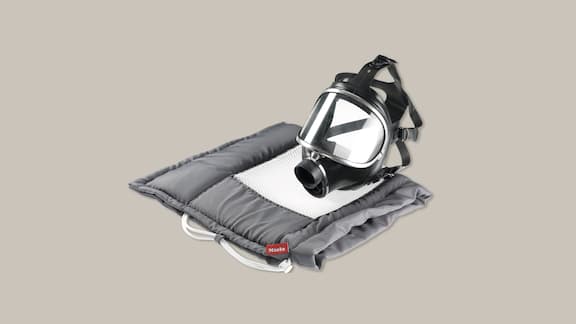
When reprocessing breathing masks, in addition to manual cleaning, masks can be cleaned in a fresh water dishwasher, in a large-chamber washer-disinfector or in a washing machine. A distinction is made between cleaning alone and cleaning with disinfection. The differences vary from region to region.
The selection of the cleaning agent, adjustment of the cleaning agent concentration, temperature and activation time to the mask is important for the cleaning intensity, the long service life and the preservation of the functionality of the washed items. The manufacturer's instructions must be observed when reprocessing respiratory protection materials. The masks are dried in the drying cabinet or in the tumble dryer in the holding rack at temperatures of up to 60°C.
Compressed air bottles, carriers
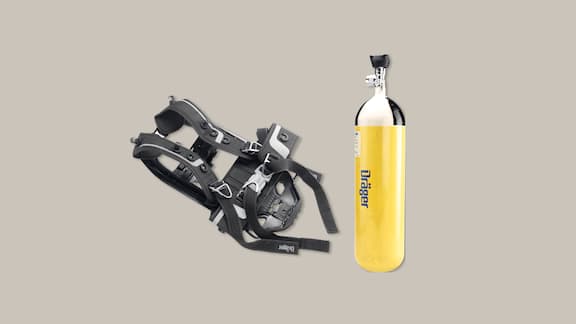
It is possible to clean compressed air unit carrier frames and compressed air bottles with fresh water dishwashers or large-chamber washer-disinfectors. All solutions offer carefully coordinated programmes for cleaning and disinfection as well as baskets for the secure positioning of items to be reprocessed.
Are you interested in our professional solutions?
Safely prepared equipment for every operation: We understand the challenges and dangers that fire brigades and other emergency services face every day. Our contribution to protecting the emergency services: 360PRO. Our holistic, harmonised system for the preparation of protective equipment. We are there for you so that your team can concentrate on the next mission quickly and contamination-free with reprocessed protective equipment. Find out more about Miele 360PRO for fire and rescue services.
- 1.Internal Knowledge
